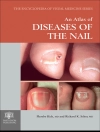Diagnostic cystoscopy is the gold standard procedure in assessing anatomical variations and/or bladder pathologies. For example, for a clinician to adequately rule out carcinoma in situ of the bladder the clinician must directly visualize the whole bladder. Mastering this skill is thus incredibly important for the training MD and training advanced practice provider (Nurse Practitioner or Physician Assistant). Once mastered, this readily available reference will serve to benefit said clinician in differentiating benign and malignant pathologies.
This text is designed as a comprehensive review by experts in the field of urology on the cystoscope, including both the flexible and rigid instrument, technical use, and certainly bladder pathologies. The rigid cystoscope includes three parts: the scope/lens, bridge, and sheath. These three parts may seem self-explanatory, however there are array of varying options within these three parts that have specific indicationsfor use. Thus, being very familiar with these instruments is vital in being a great cystoscopist. This book will prepare all practitioners to improve and perfect their skills as cystoscopists.
Perhaps most significantly, this book will cover numerous topics in normal anatomy, benign and malignant urethral pathology, and benign and malignant bladder pathology. Dialogue on each presented topic includes a brief pathological discussion, associated clinical significance such as common signs or symptoms, suggested treatment for said topic, additional references for further reading, and photographs. Photographs are included on every topic, with a minimum of one image and a maximum of five for reference.
A comprehensive reference on diagnostic cystoscopy has been needed for quite some time. This book will satisfy this need for both the developing and experienced cystoscopist.
Table des matières
Introduction to Cystoscopy.- Parts of the Cystoscope.- Operative Technique.- Clinical Pearls.- Innovations in the Field.- Fluorescence Cystoscopy, Disposable Instruments
Normal Bladder Anatomy.- Typical Bladder Anatomy Male.- Bladder Anatomy Female.- Normal Variants of Male Urethra.- Normal Variants of Female Urethra.- Normal Variants of Bladder Trigone and UO.- Normal Variant of Bladder Wall.- Benign Urethral Pathology.- Urethritis.- Stricture Disease.- Bladder Neck Contracture.- Benign Prostatic Enlargement.- Prostate Abscess.- Urethral Valves.- Urethral Diverticulum.- Megalourethra.- Urethral Tumors.- Epithelial or Mixed, Mesenchymal, or Inflammatory Pseudotumors (False Polyps).- Urethral Trauma.- False Passage.- Ant. Versus Post. Disruption.- Partial versus Complete Disruption.- Urethral Fistula.- Foreign Bodies.- Medical Devices, Other.- Malignant Urethral Pathology.- TCC, Squamous Cell, Adenocarcinoma, Clear Cell, Others.- Benign Bladder Pathology.- Acute Cystitis.- Inflammatory Polyps.- Malakoplakia, Cystitis Cystica, Xanthoma.- Hyperemic/Confluence of Vessels.- Hemorrhagic Cystitis, Mucosal Edema.- Nonkeratinizing Squamous Metaplasia.- Interstitial Cystitis.- Bladder Trabeculations.- Bladder Fistula.- Vesicovaginal, Enterovesical.- Ureterocele.- Bladder lithiasis.- Foreign Bodies.- Medical Devices, Other.- Malignant Bladder Pathology.- Invading Prostate Cancer.- Carcinoma In Situ.- Urothelial Cell Carcinoma.- Sessile, Pedunculated, Ta-T4, Small versus Large.- Extrinsic Malignant Invasion.- Cervical Cancer, Colon/Rectal Cancer, Other Cancer.
A propos de l’auteur
Bradley C. Tenny MSN, AGACNP, CUNP
Atrium Health
Charlotte NC
USA
Michael O’Neill MS, MD
Atrium Health
Wake Forrest Medical School
Charlotte, NC
USA












